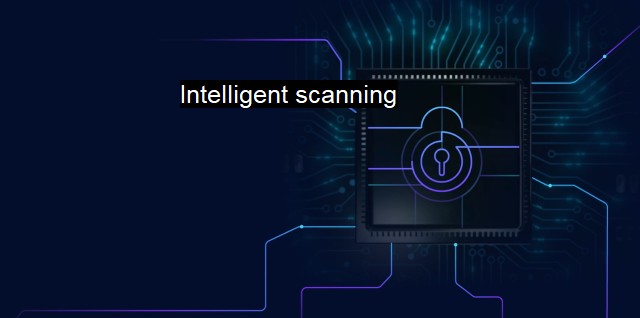What is Intelligent scanning?
The Role of Intelligent Scanning in Cybersecurity and Antivirus Management: An Introduction to Machine Learning-Based Techniques of Threat Detection and Mitigation
Intelligent scanning has emerged as a modern, proactive approach to cybersecurity, encompassing strategies and tools designed to detect and neutralize threats before they can significantly harm networks and systems. An essential anchor in an array of antivirus solutions and cybersecurity technologies, intelligent scanning employs advanced artificial intelligence (AI) and machine learning (ML) to deliver more efficient, rapid, and meticulous analyses of cyber threats than traditional, manual methods.The concept of "intelligent scanning" can be likened to a diligent, all-seeing guard that never sleeps—it continually scans, searches, learns, and improves. Its intelligence is primarily derived from machine learning algorithms and AI, which enable it to adapt and refine its ability to detect fresh threats, anomalies, and suspicious activities continually.
The proliferation of cyber threats globally necessitates intelligent scanning. The cyber threat landscape has witnessed various sophisticated and adaptive threats like ransomware, social engineering attacks, advanced persistent threats (APTs), and more recently, polymorphic and metamorphic malware. Cybercriminals also use deceptive and evasive techniques, making detection even more challenging.
Intelligent scanning addresses such threats by proactively searching for sophisticated attack patterns and detecting new and unseen threats in real-time. It digs deep into system behaviors, file associations, network traffic, and even minute, less noticeable abnormalities that a simple scan may not detect, ensuring comprehensive protection.
One of the critical techniques involved in intelligent scanning is heuristic analysis, which examines the code in files to identify and predict potentially harmful behavior. This preemptive process can identify new strains of malware, even without the need for existing definitions or previous encounters.
Intelligent scanning isn't truly bound by specified definitions, unlike conventional signature-based scanning, which depends on known virus definitions. This reliance on static definitions gives standard scanners a handicap since they can only identify threats that match their existing signatures. With cyber threats continually morphing and evolving, this approach is becoming increasingly less effective. Intelligent scanners, on the other hand, can learn from previously detected threats and apply this knowledge to identify novel ones.
Apart from intelligent detection, these scans also excel at mitigating risks. They can automatically block or quarantine identified threats, preventing them from causing extensive damage. At times, they can even provide suggestions or employ auto-fix methods to amend the vulnerabilities in the system.
Intelligent scanning offers streamlined integration with other cybersecurity solutions. Its versatility makes it compatible with a spectrum of security technologies, fortifying the overall infrastructure of systems against threats. Its agile nature ensures minimum impact on system resources, preserving performance levels even while enforce rigorous scanning and protection measures.
Layered with superior features like system vulnerability identification, security breach warning systems, real-time protection, and integrated firewall, intelligent scanning raises the bar of holistic cybersecurity solutions to harden defenses against cyber threats.
It's crucial to remember that intelligent scanning does not render cybersecurity staff obsolete. It requires human involvement for operation refinements and decision-making processes, particularly in ambiguous scenarios. It should be seen as an augmentative tool rather than a complete replacement of human element.
Intelligent scanning, as part of the antivirus and cybersecurity ecosystem, bridges the gap between detection and elimination of threats. It offers adaptive, responsive, and forward-looking defense mechanisms, ensuring every bits and segments of our cyber-world are continuously screened to ward off any potential threats. Its constant interaction with the evolving threat landscape enables it to enhance its threat detection and neutralization arsenal continuously, marking a leap forward in the endeavor to combat cyber threats. As we become more entrenched in the digital realm and cyber threats rise in complexity, the role of intelligent scanning in maintaining our online safety becomes even more critical.

Intelligent scanning FAQs
What is intelligent scanning?
Intelligent scanning refers to a type of scanning technique used in cybersecurity and antivirus software that uses advanced algorithms, machine learning, and artificial intelligence to detect and analyze threats. It is designed to identify potentially malicious files or activities that traditional scanning methods might miss.How does intelligent scanning differ from traditional scanning methods?
Traditional scanning methods involve using pre-defined signatures or patterns to detect threats, which may not be effective against newer threats. On the other hand, intelligent scanning uses machine learning and artificial intelligence to learn and adapt to new threats, making it more effective in detecting and preventing malicious activities.Is intelligent scanning more effective than traditional scanning methods?
Yes, intelligent scanning is generally more effective in detecting and preventing advanced threats compared to traditional scanning methods. This is because it uses sophisticated techniques to analyze data and identify potential threats before they can cause any harm.What are the benefits of using intelligent scanning technology for cybersecurity?
Intelligent scanning technology offers several benefits for cybersecurity, including faster threat detection and response times, improved accuracy and reliability of threat detection, and reduced false positives. It can also help organizations save time and money by automating routine security tasks and freeing up resources for more critical security operations.| | A | | | B | | | C | | | D | | | E | | | F | | | G | | | H | | | I | | | J | | | K | | | L | | | M | |
| | N | | | O | | | P | | | Q | | | R | | | S | | | T | | | U | | | V | | | W | | | X | | | Y | | | Z | |
| | 1 | | | 2 | | | 3 | | | 4 | | | 7 | | | 8 | | |||||||